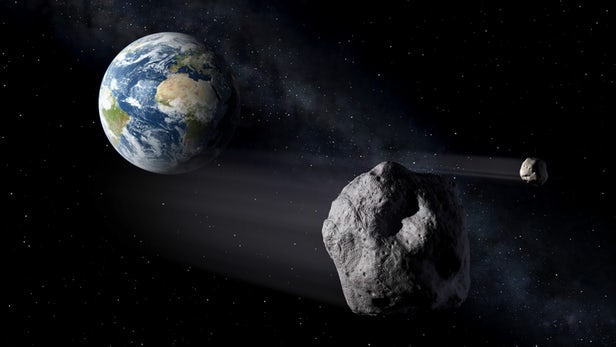A few months ago, the asteroid 2006 QV89 grabbed headlines thanks to it having a slim chance of striking Earth this September. But now it seems that the potentially-hazardous space rock has missed its appointment. ESA has confirmed that the asteroid hasn’t appeared in the sky yet, ruling out an impact any time soon.
Asteroid 2006 QV89 was discovered during a close pass to Earth in August 2006. During the 10 days it was visible, scientists plotted its course and found that it had a one in 7,000 chance of hitting Earth 13 years later – on September 9, 2019. After that, the asteroid disappeared into the inky blackness of space and hasn’t been seen since.
With that potential impact date fast approaching, astronomers have been keeping an eye on the skies for signs of its reappearance. The data collected wasn’t detailed enough to plot its path precisely, so nobody really knows where it is right now.
But what we do know is where it would be if it was on a collision course with Earth. So ESA and the European Southern Observatory instead focused on those few places, rather than scanning the whole sky.
On July 4 and 5, astronomers used the Very Large Telescope (VLT) in Chile to observe those spots. And crucially, there was no sign of the asteroid. The team says that even if the rock was smaller than expected, it still would have been visible had it been there. That let them rule out an impact in September, marking the first time a non-detection has been used to rule out an asteroid impact.
Asteroid 206 QV89 may still due for a fly-by of Earth this year, but it won’t hit. And even if it did, it’s far from a planet-killer – the rock is estimated to be between 20 and 50 m (65 and 164 ft) wide. That’s big enough to damage buildings if it struck a populated area, but nothing too serious.
By comparison, the Chelyabinsk meteor, which exploded over Russia in 2013, is believed to have been about 20 m (66 ft) wide. At the other end of the scale, it took a 10-km-wide (6.2-mi) rock to wipe out the dinosaurs.

